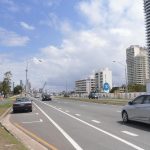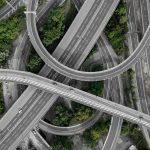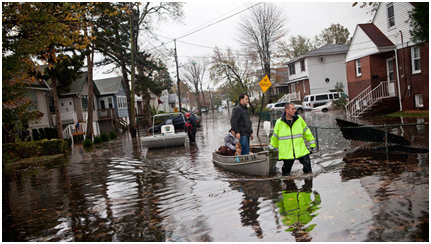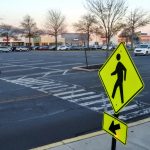New Jersey Future Blog
Can the Reduction in Travel Prompted by COVID-19 Be Sustained?
March 15th, 2021 by Tim Evans
The Atlantic’s environmentally-themed “Weekly Planet” newsletter made an important observation at the beginning of 2021 about one salutary side effect of the COVID-19 pandemic’s effects on energy use: “Experts expected that emissions would decline—the pandemic brought the world to a standstill for weeks and then months—but it wasn’t clear just how much they would fall. Turns out: pretty far. In 2020, American greenhouse-gas pollution fell 10.3 percent, a staggering decline and the largest year-over-year drop since World War II.”
Further: “Last year, U.S. emissions fell to about 21 percent below their 2005 level and—for the first time this century—below their 1990 level.”
A global pandemic is no one’s idea of a good way to reduce greenhouse gas (GHG) emissions. Emissions decreased because the entire economy slowed down, causing financial hardship to untold numbers of households and businesses. Stay-at-home orders and restrictions on indoor gatherings meant that many people in public-facing businesses couldn’t work, and many others curtailed shopping and leisure trips that ordinarily inject money into the economy—and that are ordinarily enjoyable activities for people. Giving up these activities is neither practical nor desirable as a long-term outcome.
But what if some of the reduction in emissions doesn’t have to be temporary? The article notes that the drop in CO2 emissions did not come from the energy sector—people still used the same amount of heat and electricity, they just used it at home rather than at the office. Instead, the reduction came from the transportation sector as people scaled back their travel.
Travel for shopping and recreational purposes will inevitably come back when medical professionals give the all-clear to return to pre-pandemic behavior. In fact, INRIX, one of the transportation data companies that documented the initial stark decline in driving (New Jersey Future highlighted their findings back in April of last year) found in June that travel had already bounced back to above pre-COVID levels in much of the country, though mostly not in the bigger metropolitan areas where the virus was still most prevalent at that point. (Some of this may also have been temporary, with people increasing their leisure travel above normal levels as the first wave of the pandemic subsided in the summer.)
Commuting to work, however, is a different story. Many employers are realizing they don’t really need to have all their employees in the office every day and are contemplating adopting more formal remote work options that will outlast the pandemic. One study, by KPMG, is optimistic that a permanent reduction in vehicle-miles traveled of as large as 10% is possible, based on both employees and employers’ desire to have staff continue to work from home on at least a part-time basis. This would represent a reduction of the transportation sector’s GHG emissions equivalent to electrifying 10% of the vehicle fleet (which would amount to 600,000 cars and trucks in New Jersey), practically overnight.
The larger lesson is that when people drive less, GHG emissions go down. There are many ways to help people drive less—working from home is one of them, but we can also reduce the need to travel by car by building things closer together, reducing the distances between people’s desired destinations. This results not only in some trips now being feasible to take on foot, it also reduces driving distances for the majority of trips that are still taken by car. If we want to help sustain the reductions in VMT that the pandemic has unexpectedly inspired, we should start thinking more about the downstream transportation effects of where we build things, and build so not every trip needs to be taken by car.
Related Posts
Tags: GHG, GHG emissions, greenhouse gas emissions, travel, U.S. emissions, working from home
















